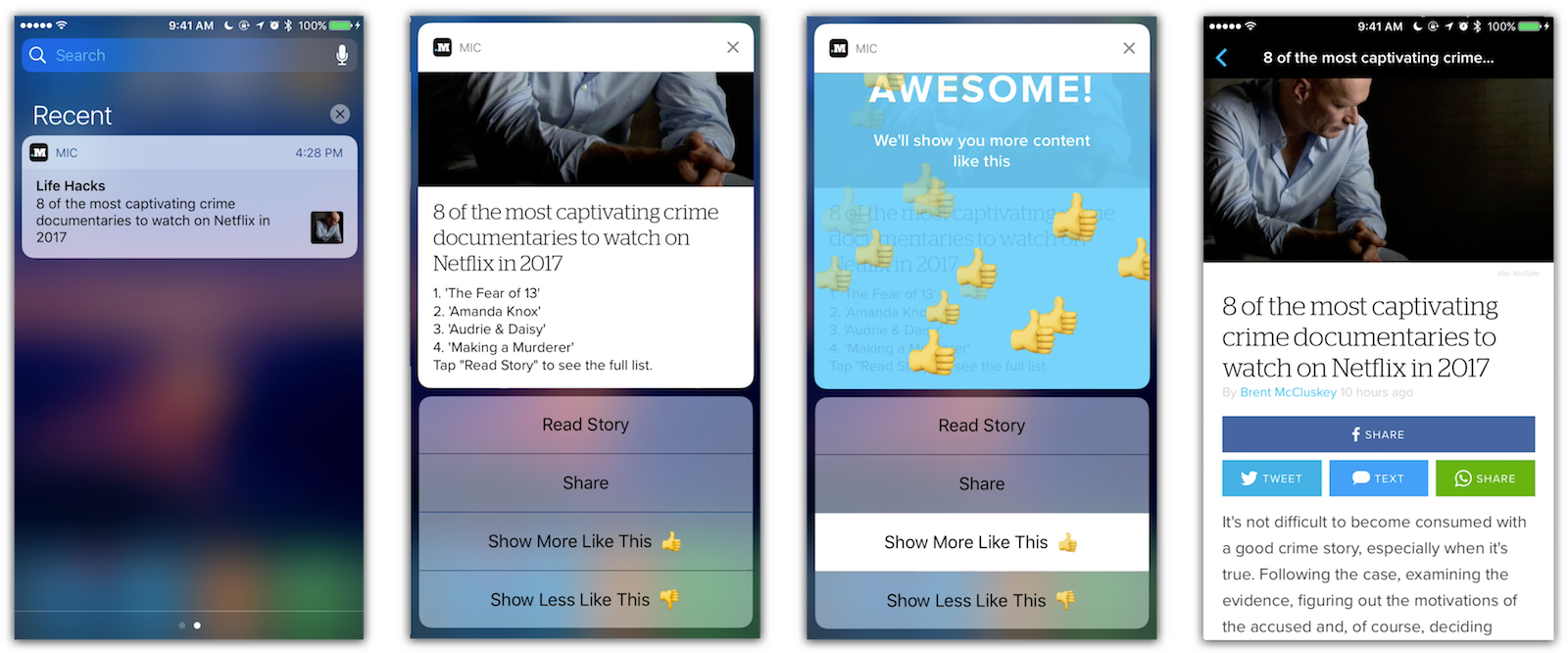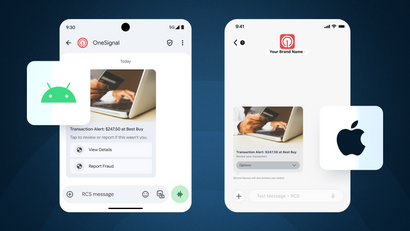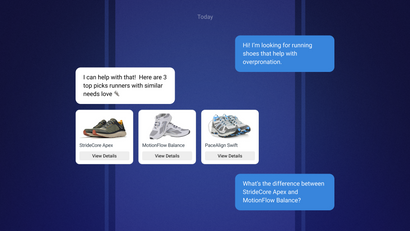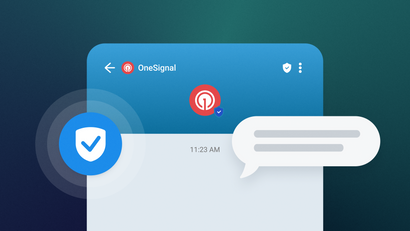According to a survey of 30 outlets with mobile apps, push notifications sent by news publishers are up 16% this year. The Wall Street Journal, in particular, increased the number of alerts they send in one week from 16 to 72 in the past year.
Most outlets send between 4 and 10 push alerts a day, with some regularly sending 16 messages per day. Additionally, on days with breaking news, such as a car chase, outlets send more frequent notifications to keep their audiences updated on evolving events.
Not only is the number of news alerts increasing sharply, but the length of these alerts (in characters) have increased by 30% in some cases.
Surprisingly, the increase in push alerts for news was not deliberate. It's a byproduct of intersecting cultural factors, including the digitization of information exchange. Editors recognize the power of mobile alerts and the potential to reach larger audiences than paper-and-ink newspapers, or even static websites.
Takeaways
The Columbia Graduate School of Journalism dug into mobile push alerts for a report with the Guardian Mobile Innovation Lab. Here are the five biggest takeaways from the report to help you increase open rates and conversion.
1. Provide Context in the Push Notification
Clickbait headlines are out; context is in. Alerts are longer so outlets have enough room to give each notification context.
Alerts should pass what one mobile editor interviewed for last year’s report dubbed the “dinner conversation test”—the base requirement her outlet’s alerts needed to meet. “Someone can read your push alert and grab a tidbit that they can then talk to their friends at dinner about without needing to tap into the story and read the whole thing.”
2. Send Multiple News Alerts Per Day
News outlets need to strike a careful balance between “over-alerting” and falling behind. They should understand that push alerts are not a constant. Rather, they can be sent in pulses and waves based on current events.
If there is an evolving story surrounding a major investigation, immigration scandal, or safety threat, push alerts become increasingly frequent. The assumption is that audiences want to stay abreast of recent developments and will not feel over-alerted.

3. Use Segmented Channels with Opt-ins
As you can imagine, readers interested in a particular news story would be more likely to opt into a subject-specific topic.
Wall Street Journal sends a greater quantity of alerts through optional, but focused channels such as technology, economy, science, politics, and opinion. CNN mobile app settings help create audience segments from users’ self-identified interests.
“The challenge is that we want to alert every important turn in a major story... At the same time, we don’t want to overload audiences, especially audiences that are less engaged with the story. The high-frequency alert category allows us to meet that first demand and not overload other audiences.”
Marcus Mabry, CNN
4. Don’t Just Push Breaking News
Breaking news is just one of many channels, but it remains a major source of push notifications with a 68% year-over-year increase.
But pushing news alerts doesn’t only have to be about breaking news. A greater variety of push-worthy content is emerging, such as event timelines, policy analyses, first-hand accounts of major events and “general” news.

5. Include Relevant Images
Rich notifications are still very new. Most iOS users don't realize they can expand notifications, so there's no reason to use images in every push.
However, they have the potential to significantly increase open rates.
"We’re including photos in roughly a third of our push alerts now, and have seen consistently higher open rates for those alerts. The alerts that would benefit from a photo usually jump out at us, so the decision doesn’t require much thought. We only add photos to alerts that actually merit a photo, because we don’t want to dilute their effectiveness."
Elizabeth Wolfe, Chicago Tribune
At OneSignal, we're tracking our users' CTRs to determine best practices, and we've seen a similar increase in click through rates with the addition of photos. For example, one customer, a chain of TV news broadcasters, replaced their local news station logos with rich images related to the story being pushed. The customer's average CTR jumped from 3% to 8-9%.

Sending push alerts is an effective platform to reach readers with bite-sized news content that fits on mobile lock screens. Whether you're a global publisher, or an individual blogger, OneSignal can help you start sending push notifications in a matter of minutes. Create a free account or contact an expert to learn more.




